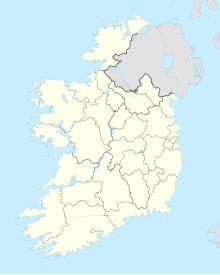Mount Jerome cemetery

The entrance to Mt. Jerome, on right.
|
|
| Shown within Ireland | |
| Details | |
|---|---|
| Established | 1836 |
| Location | 158 Harold's Cross Road, Harold's Cross, Dublin |
| Country | Ireland |
| Coordinates | 53°19′29″N 6°16′48″W / 53.32472°N 6.28000°W |
| Type | Public |
| Owned by | General Cemetery Company of Dublin |
| Size | 20.2 ha (49.9 ac) |
| No. of graves | Over 300,000 |
| Website | mountjerome |
| Find a Grave | Mount Jerome Cemetery |
Mount Jerome Cemetery & Crematorium (Irish: Reilig Chnoc Ieróim) is situated in Harold's Cross on the south side of Dublin, Ireland. Since its foundation in 1836, it has witnessed over 300,000 burials. Originally an exclusively Protestant cemetery, Roman Catholics have also been buried there since the 1920s.
The name of the cemetery comes from an estate established there by the Reverend Stephen Jerome, who in 1639 was vicar of St. Kevin's Parish. At that time, Harold's Cross was part of St. Kevin's Parish. In the latter half of the 17th century, the land passed into the ownership of the Earl of Meath, who in turn leased plots to prominent Dublin families. A house, Mount Jerome House, was constructed in one of these plots, and leased to John Keogh. In 1834, after an aborted attempt to set up a cemetery in the Phoenix Park, the General Cemetery Company of Dublin bought the Mount Jerome property, "for establishing a general cemetery in the neighbourhood of the city of Dublin".
The Funerary Chapel in the cemetery was the first Puginian Gothic church in Dublin. It was designed by William Atkins.
In 2000, Mount Jerome Cemetery established its own crematorium on the site.
Notable people buried here include:
There is a large plot to the deceased members of the Royal Irish Constabulary and the Dublin Metropolitan Police.
The cemetery contains the war graves of 35 British Commonwealth service personnel from World War I and 39 from World War II.
The remains of French Huguenots from St. Peter's Churchyard, Peter's Row (now the location of the Dublin YMCA), which was demolished in the 1980s, and from St. Brigid's and St. Thomas's churchyards are interred in the cemetery.
...
Wikipedia

